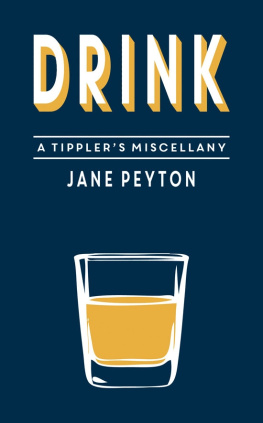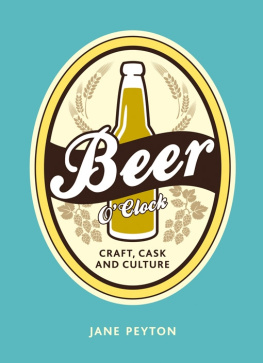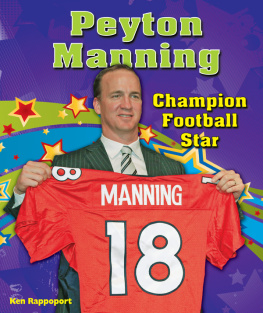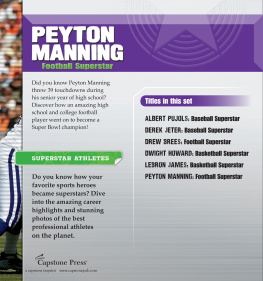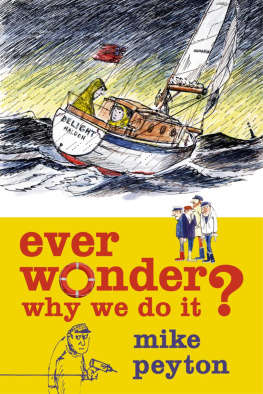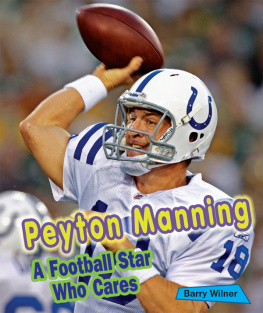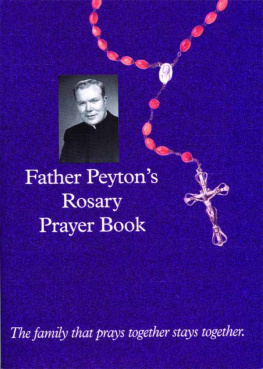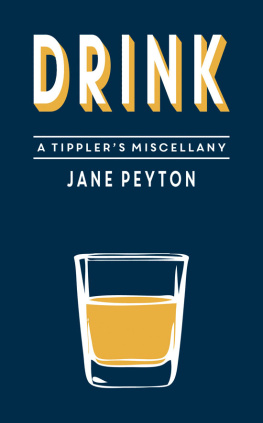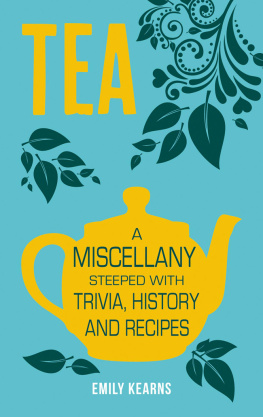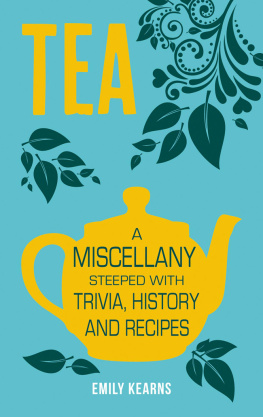Jane Peyton - Drink: A Tippler’s Miscellany
Here you can read online Jane Peyton - Drink: A Tippler’s Miscellany full text of the book (entire story) in english for free. Download pdf and epub, get meaning, cover and reviews about this ebook. year: 2015, publisher: Summersdale, genre: Religion. Description of the work, (preface) as well as reviews are available. Best literature library LitArk.com created for fans of good reading and offers a wide selection of genres:
Romance novel
Science fiction
Adventure
Detective
Science
History
Home and family
Prose
Art
Politics
Computer
Non-fiction
Religion
Business
Children
Humor
Choose a favorite category and find really read worthwhile books. Enjoy immersion in the world of imagination, feel the emotions of the characters or learn something new for yourself, make an fascinating discovery.
- Book:Drink: A Tippler’s Miscellany
- Author:
- Publisher:Summersdale
- Genre:
- Year:2015
- Rating:5 / 5
- Favourites:Add to favourites
- Your mark:
- 100
- 1
- 2
- 3
- 4
- 5
Drink: A Tippler’s Miscellany: summary, description and annotation
We offer to read an annotation, description, summary or preface (depends on what the author of the book "Drink: A Tippler’s Miscellany" wrote himself). If you haven't found the necessary information about the book — write in the comments, we will try to find it.
Drink: A Tippler’s Miscellany — read online for free the complete book (whole text) full work
Below is the text of the book, divided by pages. System saving the place of the last page read, allows you to conveniently read the book "Drink: A Tippler’s Miscellany" online for free, without having to search again every time where you left off. Put a bookmark, and you can go to the page where you finished reading at any time.
Font size:
Interval:
Bookmark:
DRINK
First published in 2013 as School of Booze
Second edition published in 2015
This edition copyright Jane Peyton, 2015
Cover images Tetiana Yurchenko/Shutterstock, Gurza/Shutterstock
All rights reserved.
No part of this book may be reproduced by any means, nor transmitted, nor translated into a machine language, without the written permission of the publishers.
Jane Peyton has asserted her right to be identified as the author of this work in accordance with sections 77 and 78 of the Copyright, Designs and Patents Act 1988.
Condition of Sale
This book is sold subject to the condition that it shall not, by way of trade or otherwise, be lent, resold, hired out or otherwise circulated in any form of binding or cover other than that in which it is published and without a similar condition including this condition being imposed on the subsequent purchaser.
Summersdale Publishers Ltd
46 West Street
Chichester
West Sussex
PO19 1RP
UK
www.summersdale.com
Printed and bound in the Czech Republic
eISBN: 978-1-78372-632-5
Substantial discounts on bulk quantities of Summersdale books are available to corporations, professional associations and other organisations. For details contact Nicky Douglas by telephone: +44 (0) 1243 756902, fax: +44 (0) 1243 786300 or email: nicky@summersdale.com.
Disclaimer: The publisher urges care and caution in the pursuit of any of the activities represented in this book. This book is intended for use by adults only. Please drink responsibly.
PRAISE FOR DRINK
Jane Peyton serves up an intoxicating brew of drinking lore, boozy anecdotes and hop-driven history this is the sort of school I wish Id gone to.
Adrian Tierney-Jones, beer writer and author of Great British Pubs
Whether its the words for hangover in Swedish, the beer-related miracles of Brigit of Kildare, or the three classifications of a drunk in Japan, youll find it all in here, as beer sommelier Jane Peyton takes us on an enjoyable tour of all things alcoholic. Covering all types of drink, from absinthe through to whisky, one swiftly realises that Jane is as much a lover of words and history as she is of booze. Where else will you find the origins of the phrases fill your boots and scot free within a few pages?
Just like those conversations down the pub, this is a mix of fun, fancy and facts, presented with Janes refreshing charisma and engaging enthusiasm. You are hereby cordially invited to join the principal of the School of Booze for an entertaining jollification. Cheers!
Susanna Forbes, www.drinkbritain.com
Jane Peytons passion for the subject shines through on every page of this riotous, irreverent journey through the world of drink. Chock-full of fascinating drinks trivia too.
Alice Lascelles, The Times columnist, and founding editor of Imbibe magazine
The perfect starter to a great pub conversation. Will launch a thousand sentences that begin with the words, I bet you didnt know...
Pete Brown, author of Man Walks into a Pub and Hops and Glory
INTRODUCTION
Dont tell the social services, but when my siblings and I were children, our parents allowed us to drink a tiny glass of low-alcohol cider with Christmas dinner. It was a once-a-year treat that made the day even more special. We lifted our glass and Dad gave a toast to deceased family members. Then we sipped the sweet sparkling juice knowing that we were participating in a ritual. Even back then I preferred the cider with the pork rather than turkey. A nascent sommelier!
My three wonderful maiden great-aunts used to throw jollifications when the extended family would gather for singing, laughter, and maybe a jig fuelled by something stronger than lemonade. An abiding memory is what fun it all was when people congregated and had a drink. They relaxed, laughed, told jokes, sang, acted daft, and everyone felt the warmth of companionship.
I have always been fascinated by the story behind alcohol how it is made, the effect it has, the cultural history, and its central role in so many societies. This led me to found an events business called School of Booze. I host tutored beer, cider, wine and whisky tasting events for private groups, appear as a public speaker, and recreate libations from historic eras. My passion is beer and I am an accredited beer sommelier, which if you like beer is one of the most enjoyable things a person can do!
When it comes to the urge for a drink, necessity is the mother of invention. In my experience the greatest example of this is the nomads of Mongolia (and other central Asian countries) who roam around the steppes in search of pasture for their animals. These people would not know what to do with a piece of fruit or a vegetable as they do not stay anywhere long enough to grow anything to eat or supply ingredients to make hooch with. So what do they do when the nearest off-licence may be hundreds of miles away? They drink airag (also known as kumis) which is made from fermented horses milk.
Horses play a central role in their society and so does airag as an important part of the daily diet. A nineteenth-century book celebrating the nutritional and health qualities of airag referred to it as milk champagne. In Mongolia airag is also distilled into a clear spirit called shimiin arkhi. At around 12 per cent ABV it has a bigger kick than its low alcohol sibling. Fermentation is easy to achieve when airborne yeast cells land on the milk and ferment the sugars, but milking the mare is a little trickier. A foal suckles its mothers teat to start the milk flow and then a milkmaid moves in with a bucket, wraps an arm around the mares hind leg and starts milking. I can vouch for the fact that airag tastes similar to yoghurt with a sour flavour and slight tingle on the tongue because I spent some time in Mongolia. My hosts offered me a drink and, well, it would be rude not to. They passed a bowl, the size of a heavyweight boxers fist, full of a pale thin liquid. With all eyes on me I accepted it and smiled as I tucked in, trying to avoid the horse hairs floating around on the top, and finished the entire serving. Little did I know that in Mongolia if you eat and drink everything served up, it means you want more.
This book is dedicated to the peerless British boozer and is a guide to whats behind the bar. If youve ever wondered how your favourite drink is made, then this is the book for you. It also includes highlights of the history of some of the most popular alcoholic beverages with compelling pieces of trivia to tell your mates, where else, but down the pub.
Its not the whole story, just an overview because alcohol is such a vast subject it would not all fit into a book that could be lifted without dislocating the back. The content is unapologetically British-centric. When I mention Britain it is sometimes shorthand for England, Wales and Scotland even if it refers to the time before the Act of Union 1707. Sorry, Scots, I do know that Scotland was an independent country before then. I also refer to some historic regions or principalities by their modern geographic locations in Germany or Italy.
The majority of alcohols history took place before humans developed writing, so historians rely on archaeology if the evidence exists, or assumptions. And the nature of intoxication means that contemporaneous accounts cannot always be trusted. If repeated enough times ale house legends become their own truth and I found many such examples during my research. This will come as no surprise but there is so much rubbish on the internet! Juicy tales about alcohol are copied from one website to another without any fact checking. This is particularly true of the provenance of a beer style called India Pale Ale. Most sites that mention it contain incorrect information. For the true story, and other beer-related topics, the best source is historian Martyn Cornell, who writes books and a blog called Zythophile and meticulously researches his subject.
Next pageFont size:
Interval:
Bookmark:
Similar books «Drink: A Tippler’s Miscellany»
Look at similar books to Drink: A Tippler’s Miscellany. We have selected literature similar in name and meaning in the hope of providing readers with more options to find new, interesting, not yet read works.
Discussion, reviews of the book Drink: A Tippler’s Miscellany and just readers' own opinions. Leave your comments, write what you think about the work, its meaning or the main characters. Specify what exactly you liked and what you didn't like, and why you think so.

